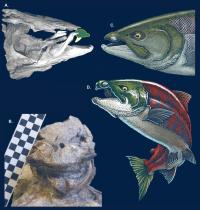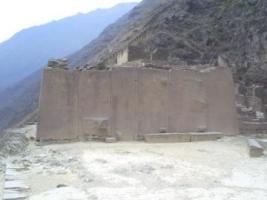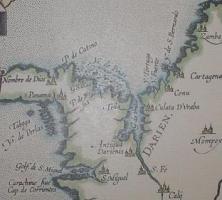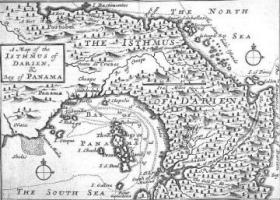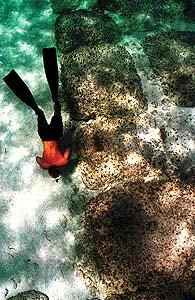Copy Link
Add to Bookmark
Report
CERT Advisory 105

-----BEGIN PGP SIGNED MESSAGE-----
=============================================================================
CERT(sm) Advisory CA-95:18
Original issue date: December 18, 1995
Last revised: August 30, 1996
Removed references to README files and added a pointer to CERT
summaries. Replaced old version of the incident reporting form
with version 3.0.
A complete revision history is at the end of this file.
Topic: Widespread Attacks on Internet Sites
- -----------------------------------------------------------------------------
Over the last several weeks, the CERT Coordination Center has been working on
a set of incidents in which the intruders have launched widespread attacks
against Internet sites. Hundreds of sites have been attacked, and many of the
attacks have been successful, resulting in root compromises at the targeted
sites. We continue to receive reports, and we believe that more attacks are
going undetected.
**********************************************************************
All the vulnerabilities exploited in these attacks are known, and are
addressed by CERT advisories (see Section III).
**********************************************************************
We urge everyone to obtain these advisories and take action to ensure
that systems are protected against these attacks. Also, please feel
free to redistribute this message.
We will update this advisory as we receive additional information.
Please check advisory files regularly for updates that relate to your site.
Also see CERT Summaries for information on intruder activity:
ftp://info.cert.org/pub/cert_summaries/
- -----------------------------------------------------------------------------
I. Description
Intruders are doing the following:
- using automated tools to scan sites for NFS and NIS vulnerabilities
- exploiting the rpc.ypupdated vulnerability to gain root access
- exploiting the loadmodule vulnerability to gain root access
- installing Trojan horse programs and packet sniffers
- launching IP spoofing attacks
II. Impact
Successful exploitation of the vulnerabilities can result in unauthorized
root access.
III. Solution
The CERT staff urges you to immediately take the steps described in
the advisories listed below. Note that it is important
to check advisories periodically as we add updated information as we
receive it.
a. Using automated tools to scan sites for NFS and NIS vulnerabilities
* CA-94:15.NFS.Vulnerabilities
* CA-92:13.SunOS.NIS.vulnerability
b. Exploiting the rpc.ypupdated vulnerability to gain root access
* CA-95:17.rpc.ypupdated.vul
c. Exploiting the loadmodule vulnerability to gain root access
* CA-93:18.SunOS.Solbourne.loadmodule.modload.vulnerability
* CA-95:12.sun.loadmodule.vul
d. Installing Trojan horse programs and packet sniffers
* CA-94:01.ongoing.network.monitoring.attacks
e. Launching IP spoofing attacks
* CA-95:01.IP.spoofing
The CERT advisories are available from
ftp://info.cert.org/pub/cert_advisories
If you find a compromise, please complete the Incident Reporting Form
that we have provided at the end of this advisory, and return the
form to cert@cert.org. This completed form will help us better assist
you.
Note: Because of our workload, we must ask you not to send log files of
activity, but we would be happy to work with you as needed on how to
interpret data that you may collect. Also, the CERT staff can provide
guidance and advice, if needed, on how to handle incidents and work with
law enforcement.
If you see activity that indicates an attack is in progress, we encourage
you to contact other sites involved and the service providers, as well as
the CERT Coordination Center.
- ---------------------------------------------------------------------------
Contacting the CERT Coordination Center
For sensitive information, please use encrypted email.
The CERT public PGP key is available from
ftp://info.cert.org/pub/CERT_PGP.key
If you prefer to use DES, please call the CERT hotline
+1 412 268 7090
to exchange a DES key over the phone.
Other CERT contact information:
Internet email: cert@cert.org
Telephone: +1 412-268-7090 (24-hour hotline)
CERT personnel answer 8:30 a.m.-5:00 p.m. EST(GMT-5)/EDT(GMT-4),
and are on call for emergencies during other hours.
Fax: +1 412-268-6989
Postal address: CERT Coordination Center
Software Engineering Institute
Carnegie Mellon University
Pittsburgh, PA 15213-3890
USA
CERT advisories and bulletins are posted on the USENET newsgroup
comp.security.announce. If you would like to have future advisories and
bulletins mailed to you or to a mail exploder at your site, please send mail
to cert-advisory-request@cert.org.
Past CERT publications, information about FIRST representatives, and
other information related to computer security are available from
ftp://info.cert.org/pub/
Copyright 1995, 1996 Carnegie Mellon University
This material may be reproduced and distributed without permission provided it
is used for noncommercial purposes and the copyright statement is included.
CERT is a service mark of Carnegie Mellon University.
..............................................................................
Appendix: Incident Reporting Form
(also available from ftp://info.cert.org/pub/incident_reporting_form)
version 3.0
CERT(sm) Coordination Center
Incident Reporting Form
The CERT Coordination Center (CERT/CC) has developed the following form in
an effort to gather incident information. We would appreciate your
completing the form below in as much detail as possible. The information
is optional, but from our experience we have found that having the answers
to all the questions enables us to provide the best assistance. Completing
the form also helps avoid delays while we get back to you requesting the
information we need in order to help you. Sites have told us, as well,
that filling out the form has helped them work through the incident.
Note that our policy is to keep any information specific to your site
confidential unless we receive your permission to release that information.
Please feel free to duplicate any section as required. Please return this
form to cert@cert.org. If you are unable to email this form, please send
it by FAX. The CERT/CC FAX number is
+1 412 268 6989
Thank you for your cooperation and help.
............................................................................
1.0. General Information
1.1. Incident number (to be assigned by the CERT/CC): CERT#
1.2. Reporting site information
1.2.1. Name (e.g., CERT Coordination Center):
1.2.2. Domain Name (e.g., cert.org):
1.2.3. Brief description of the organization:
1.2.4. Is your site an Internet Service Provider (Yes/No):
2.0. Contact Information
2.1. Your contact information
2.1.1. Name:
2.1.2. Email address:
2.1.3. Telephone number:
2.1.4. FAX number:
2.1.5. Pager number:
2.1.6. Home telephone number (for CERT/CC internal use only):
2.1.7. Secure communication channel (e.g., PGP, PEM, DES, secure
telephone/FAX) [NOTE -- we will call to obtain the secure
communication channel information] (Yes/No):
2.2. Additional contact information (if available)
2.2.1. Name:
2.2.2. Email address:
2.2.3. Telephone number:
2.2.4. FAX number:
2.2.5. Pager number:
2.2.6. Home telephone number (for CERT/CC internal use only):
2.2.7. Secure communication channel (Yes/No):
2.3. Site security contact information (if applicable)
2.3.1. Name:
2.3.2. Email address:
2.3.3. Telephone number:
2.3.4. FAX number:
2.3.5. Pager number:
2.3.6. Home telephone number (for our internal use only):
2.3.7. Secure communication channel (Yes/No):
2.4. Contact information for other site(s) involved in this incident (if
available)
2.4.1. Site name:
2.4.2. Contact person name:
2.4.3. Email address:
2.4.4. Telephone number:
2.4.5. FAX number:
2.4.6. Pager number:
2.4.7. Home telephone number (for CERT/CC internal use only):
2.4.8. Secure communication channel (Yes/No):
2.5. Contact information for any other incident response team(s) (IRTs)
that has/have been notified (if available)
2.5.1. IRT name:
2.5.2. Constituency domain:
2.5.3. Contact person name:
2.5.4. Email address:
2.5.5. Telephone number:
2.5.6. FAX number:
2.5.7. Pager number:
2.5.8. Home telephone number (for CERT/CC internal use only):
2.5.9. Secure communication channel (Yes/No):
2.5.10. IRT reference number:
2.6. Contact information for any law enforcement agency(ies) that
has/have been notified (if available)
2.6.1. Law enforcement agency name:
2.6.2. Contact person name:
2.6.3. Email address:
2.6.4. Telephone number:
2.6.5. FAX number:
2.6.6. Pager number:
2.6.7. Home telephone number (for CERT/CC internal use only):
2.6.8. Secure communication channel (Yes/No):
2.6.9. Law enforcement agency reference number:
3.0. Contacting Sites Involved
3.1. We ask that reporting sites contact other sites involved in
incident activity. Please let us know if you need assistance
in obtaining contact information for the site(s) involved.
When contacting the other sites, we would very much
appreciate a cc to the "cert@cert.org" alias. This helps
us identify connections between incidents and understand
the scope of intruder activity. We would also appreciate
your including our incident number in the subject line of
any correspondence relating to this incident if one
has been assigned (see item 1.1.).
If you are unable to contact the involved sites, please get in
touch with us to discuss how we can assist you.
3.2. Disclosure information -- may we give the following types of
information to
3.2.1. the sites involved in this incident
3.2.1.1. your domain (Yes/No):
3.2.1.2. your host(s) involved (Yes/No):
3.2.1.3. your contact information (Yes/No):
3.2.2. incident response teams, for sites from their
constituencies involved in this incident
3.2.2.1. your domain (Yes/No):
3.2.2.2. your host(s) involved (Yes/No):
3.2.2.3. your contact information (Yes/No):
3.2.3. law enforcement agency(ies) if there is a legal
investigation
3.2.3.1. your domain (Yes/No):
3.2.3.2. your host(s) involved (Yes/No):
3.2.3.3. your contact information (Yes/No):
4.0. Host Information
4.1. Host(s) involved at your site. Please provide information on all
host(s) involved in this incident at the time of the incident (one
entry per host please)
4.1.1. Hostname:
4.1.2. IP address(es):
4.1.3. Vendor hardware, OS, and version:
4.1.4. Security patches applied/installed as currently
recommended by the vendor and the CERT/CC
(Yes/No/Unknown):
4.1.5. Function(s) of the involved host
4.1.5.1. Router (Yes/No):
4.1.5.2. Terminal server (Yes/No):
4.1.5.3. Other (e.g. mail hub, information server, DNS
[external or internal], etc.):
4.1.6. Where on the network is the involved host (e.g.
backbone, subnet):
4.1.7. Nature of the information at risk on the involved host
(e.g., router configuration, proprietary, personnel,
financial, etc.):
4.1.8. Timezone of the involved host (relative to GMT):
4.1.9. In the attack, was the host the source, the victim, or
both:
4.1.10. Was this host compromised as a result of this attack
(Yes/No):
4.2. Host(s) involved at other other sites (one entry per host
please)
4.2.1. Hostname:
4.2.2. IP address(es):
4.2.3. Vendor hardware, OS, and version:
4.2.4. Has the site been notified (Yes/No):
4.2.5. In the attack, was the host the source, the victim, or
both:
4.2.6. Was this host compromised as a result of this attack
(Yes/No):
5.0. Incident Categories
5.1. Please mark as many categories as are appropriate to
this incident
5.1.1. Probe(s):
5.1.2. Scan(s):
5.1.3. Prank:
5.1.4. Scam:
5.1.5. Email Spoofing:
5.1.6. Email bombardment:
5.1.6.1. was this denial-of-service attack successful
(Yes/No):
5.1.7. Sendmail attack:
5.1.7.1. did this attack result in a compromise (Yes/No):
5.1.8. Break-in
5.1.8.1. Intruder gained root access (Yes/No):
5.1.8.2. Intruder installed Trojan horse program(s)
(Yes/No):
5.1.8.3. Intruder installed packet sniffer (Yes/No):
5.1.8.3.1. What was the full pathname(s) of the
sniffer output file(s):
5.1.8.3.2. How many sessions did the sniffer log?
(use "grep -c 'DATA' <filename>" to
obtain this information):
5.1.8.4. NIS (yellow pages) attack (Yes/No):
5.1.8.5. NFS attack (Yes/No):
5.1.8.6. TFTP attack (Yes/No):
5.1.8.7. FTP attack (Yes/No):
5.1.8.8. Telnet attack (Yes/No):
5.1.8.9. Rlogin or rsh attack (Yes/No):
5.1.8.10. Cracked password (Yes/No):
5.1.8.11. Easily-guessable password (Yes/No):
5.1.9. Anonymous FTP abuse (Yes/No):
5.1.10. IP spoofing (Yes/No):
5.1.11. Product vulnerability (Yes/No):
5.1.11.1. Vulnerability exploited:
5.1.12. Configuration error (Yes/No):
5.1.12.1. Type of configuration error:
5.1.13. Misuse of host(s) resources (Yes/No):
5.1.14. Worm (Yes/No):
5.1.15. Virus (Yes/No):
5.1.16. Other (please specify):
6.0. Security Tools
6.1. At the time of the incident, were you any using the following
security tools (Yes/No; How often)
Network Monitoring tools
6.1.1. Argus:
6.1.2. netlog (part of the TAMU Security Package):
Authentication/Password tools
6.1.3. Crack:
6.1.4. One-time passwords:
6.1.5. Proactive password checkers:
6.1.6. Shadow passwords:
6.1.7. Kerberos:
Service filtering tools
6.1.8. Host access control via modified daemons or wrappers:
6.1.9. Drawbridge (part of the TAMU Security Package):
6.1.10. Firewall (what product):
6.1.11. TCP access control using packet filtering:
Tools to scan hosts for known vulnerabilities
6.1.12. ISS:
6.1.13. SATAN:
Multi-purpose tools
6.1.14. C2 security:
6.1.15. COPS:
6.1.16. Tiger (part of the TAMU Security Package):
File Integrity Checking tools
6.1.17. MD5:
6.1.18. Tripwire:
Other tools
6.1.19. lsof:
6.1.20. cpm:
6.1.21. smrsh:
6.1.22. append-only file systems:
Additional tools (please specify):
6.2. At the time of the incident, which of the following logs were you
using, if any (Yes/No)
6.2.1. syslog:
6.2.2. utmp:
6.2.3. wtmp:
6.2.4. TCP wrapper:
6.2.5. process accounting:
6.3. What do you believe to be the reliability and integrity of
these logs (e.g., are the logs stored offline or on a
different host):
7.0. Detailed description of the incident
7.1. Please complete in as much detail as possible
7.1.1. Date and duration of incident:
7.1.2. How you discovered the incident:
7.1.3. Method used to gain access to the affected host(s):
7.1.4. Details of vulnerabilities exploited that are
not addressed in previous sections:
7.1.5. Other aspects of the "attack":
7.1.6. Hidden files/directories:
7.1.7. The source of the attack (if known):
7.1.8. Steps taken to address the incident (e.g., binaries
reinstalled, patches applied):
7.1.9. Planned steps to address the incident (if any):
7.1.10. Do you plan to start using any of the tools listed
above in question 6.0 (please list tools expected
to use):
7.1.11. Other:
7.2. Please append any log information or directory listings and
timezone information (relative to GMT).
7.3. Please indicate if any of the following were left on your
system by the intruder (Yes/No):
7.3.1. intruder tool output (such as packet sniffer output
logs):
7.3.2. tools/scripts to exploit vulnerabilities:
7.3.3. source code programs (such as Trojan horse programs,
sniffer programs):
7.3.4. binary code programs (such as Trojan horse programs,
sniffer programs):
7.3.5. other files:
If you answered yes to any of the last 5 questions, please call
the CERT/CC hotline (+1 412 268 7090) for instructions on
uploading files to us by FTP. Thanks.
7.4. What assistance would you like from the CERT/CC?
Copyright 1996 Carnegie Mellon University
This form may be reproduced and distributed without permission provided it
is used for noncommercial purposes and the CERT Coordination Center is
acknowledged.
CERT is a service mark of Carnegie Mellon University.
~~~~~~~~~~~~~~~~~~~~~~~~~~~~~~~~~~~~~~~~~~~~~~~~~~~~~~~~~~~~~~~~~~~~~~~~~~~~~
Revision history
Aug. 30, 1996 - Removed references to README files because updated information
is put into the advisories themselves.
Added a pointer to CERT summaries.
Updated the file name for the incident reporting form (IRF).
Replaced the old version of the IRF with version 3.0.
-----BEGIN PGP SIGNATURE-----
Version: 2.6.2
iQCVAwUBMiS7/HVP+x0t4w7BAQFk9gP/ePGgs9kLpXb1vuy5fgMa+CB8lHP1+xeE
d4xFDu2AS+Dz39NIuY0pNrHBzl+4YN6r/dvW1ZzWb7nUVCS7X58aA7giYBf2xDXY
Mh6SuU66RfCKNVG3n1EiD1IxeTz1t5eZvcA/vIEcFyuI78YzGw/2PmFwYrfeGBgP
rMxvIGGXr/M=
=dk+E
-----END PGP SIGNATURE-----











